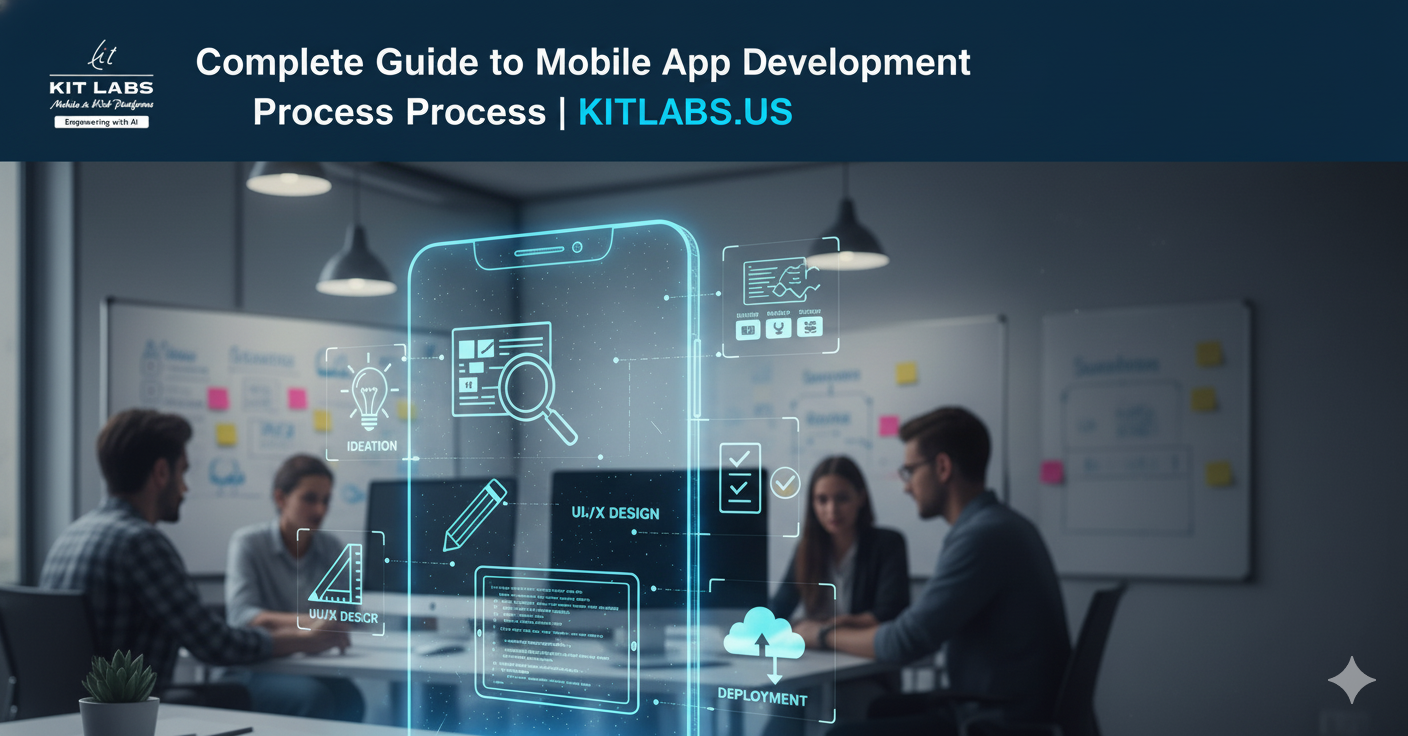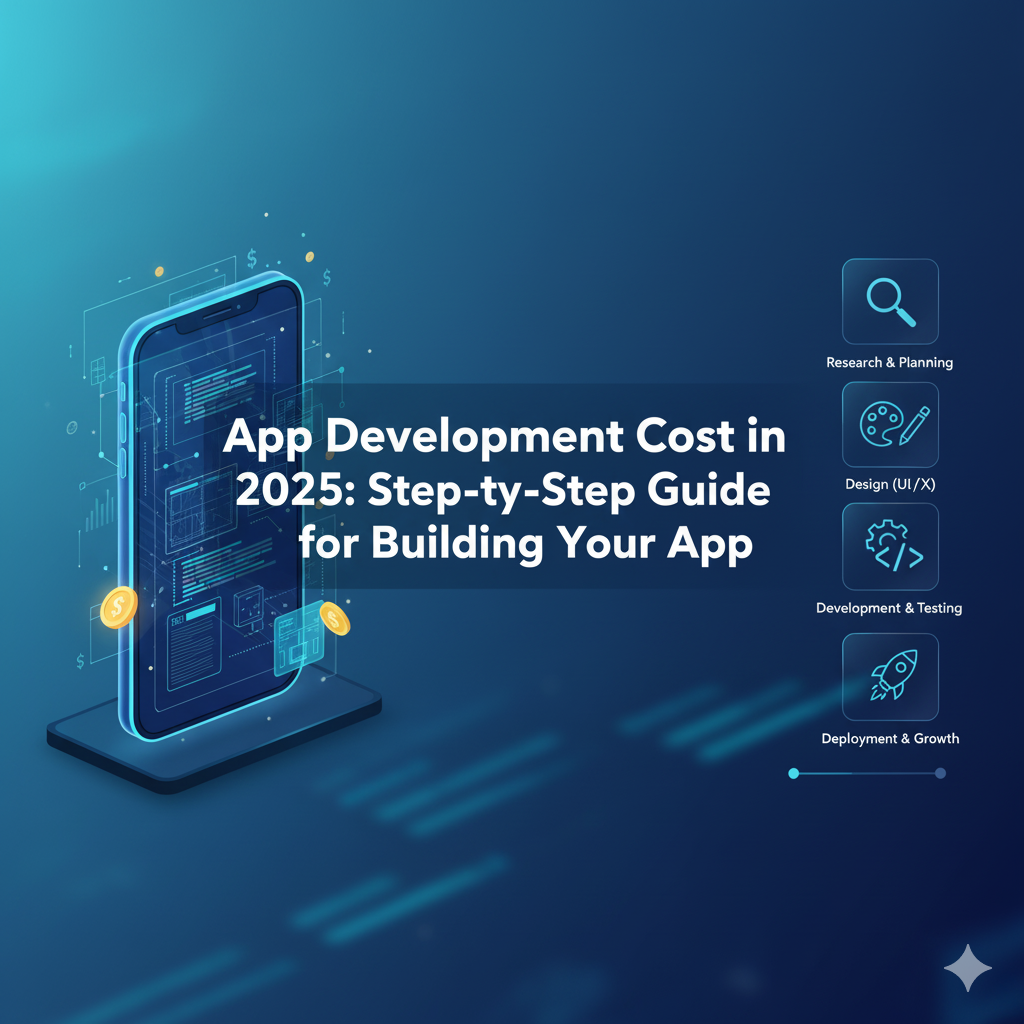
Complete Guide to the Mobile App Development Process and Tips
In today’s fast-paced digital landscape, mobile applications are no longer optional—they are central to business growth, customer engagement, and operational efficiency. A well-executed mobile application can elevate a brand, streamline business processes, and enhance customer experiences. However, building a successful mobile app requires careful planning, technical expertise, and a structured approach. Understanding the Mobile App Development Process is key to delivering a high-quality, scalable product that meets user expectations.
This comprehensive guide dives into every aspect of Mobile Application Development, explores the key Mobile App Development Phases, and shares actionable Mobile App Development Tips to ensure your project succeeds from concept to post-launch maintenance. Whether you are a startup exploring your first app or an established business aiming to optimize your mobile strategy, this guide is designed to equip you with knowledge and practical insights into how mobile apps are created effectively.
Table of Contents
- Introduction to Mobile Application Development
- Why a Defined Mobile App Development Process Matters
- Understanding How Mobile Apps Are Created
- Mobile App Development Phases
- 4.1 Ideation & Conceptualization
- 4.2 Market Research & Competitor Analysis
- 4.3 Wireframing & UI/UX Design
- 4.4 App Architecture & Technology Selection
- 4.5 Frontend & Backend Development
- 4.6 Testing & Quality Assurance
- 4.7 Deployment & App Store Submission
- 4.8 Post-Launch Maintenance & Updates
- Technology Considerations: Native vs Cross-Platform
- App Security & Compliance Best Practices
- Agile vs Waterfall in Mobile App Development
- Mobile App Monetization Models
- Mobile App Development Tips for Maximum Success
- Common Mistakes to Avoid in Mobile App Development
- Cost Factors and Timeline
- Conclusion
1. Introduction to Mobile Application Development
Mobile Application Development refers to the structured process of creating software applications that run on mobile devices such as smartphones and tablets. These apps can be native to a specific platform, like iOS or Android, or designed for cross-platform functionality using frameworks such as React Native or Flutter.
A clear Mobile App Development Process ensures that apps are not only visually appealing and functional but also scalable, secure, and aligned with business objectives. Companies that understand how mobile apps are created can plan resources effectively, reduce development risks, and achieve faster time-to-market while delivering superior user experiences.
Mobile applications today span a variety of categories, including e-commerce, finance, healthcare, logistics, social media, entertainment, and enterprise productivity tools. Understanding the phases and best practices of mobile application development is essential to ensure success in any of these domains.
2. Why a Defined Mobile App Development Process Matters
A well-defined Mobile App Development Process is critical for several reasons:
- Risk Reduction: Structured workflows minimize errors, reduce technical debt, and avoid costly rework.
- Business Alignment: Every step, from ideation to deployment, is aligned with business goals and KPIs.
- Resource Efficiency: Planning ensures optimal allocation of development resources, including team members, budget, and timeline.
- User Experience: Following a systematic process ensures usability and engagement.
- Scalability & Maintenance: Well-structured architecture and documented processes allow for easier updates, integrations, and scaling over time.
Without a structured approach, projects risk delays, budget overruns, poor performance, and ultimately, user dissatisfaction.
3. Understanding How Mobile Apps Are Created
Knowing how mobile apps are created requires understanding both technical and non-technical aspects. The process involves:
- Defining the Concept: Establishing the purpose, target audience, and core features.
- Designing the Experience: Creating wireframes and high-fidelity prototypes.
- Technical Planning: Choosing platforms, technology stacks, and architectural patterns.
- Development: Writing code for the frontend and backend systems.
- Testing & QA: Ensuring the app works flawlessly across devices and scenarios.
- Deployment: Publishing to app stores with proper optimization.
- Maintenance: Monitoring performance, releasing updates, and scaling features.
Each stage contributes to the app’s success, balancing usability, functionality, and reliability.
4. Mobile App Development Phases
A structured Mobile App Development Process includes multiple phases. Here’s an in-depth look at each phase:
4.1 Ideation & Conceptualization
This initial phase involves identifying the core problem your app will solve:
- Define the app purpose: What problem does it solve for users?
- Determine target audience: Develop detailed user personas.
- Feature listing: Decide on core functionalities and unique selling points.
- Strategic alignment: Ensure app objectives align with overall business goals.
Tips:
- Conduct brainstorming sessions with stakeholders and potential users.
- Prioritize features for an MVP (Minimum Viable Product) to validate the idea quickly.
4.2 Market Research & Competitor Analysis
Market research validates the concept and identifies competitive opportunities:
- Study competitors’ apps to identify strengths and weaknesses.
- Analyze customer reviews and feedback.
- Identify industry trends and emerging technologies in mobile application development.
- Set KPIs to measure success post-launch.
Tip: Use analytics tools to gather actionable insights on user behavior and competitor performance.
4.3 Wireframing & UI/UX Design
Design is critical to user engagement:
- Wireframes: Create low-fidelity sketches outlining app screens, navigation flow, and layout.
- High-fidelity prototypes: Add branding, typography, colors, and interactive elements.
- User feedback: Test prototypes with potential users to refine UX.
Mobile App Development Tips:
- Keep navigation intuitive.
- Use consistent branding across screens.
- Optimize touch targets and interactive elements for mobile users.
4.4 App Architecture & Technology Selection
Technical planning ensures scalability, maintainability, and performance:
- Platform choice: Native (iOS/Android) vs. cross-platform.
- Architecture: MVC, MVVM, or clean architecture.
- Tech stack: Select languages, frameworks, and third-party integrations.
- Backend planning: Define databases, APIs, and cloud services.
Tip: Choosing the right architecture early prevents rework and reduces future development costs.
4.5 Frontend & Backend Development
Frontend: Focuses on user interface and experience.
- Develop interactive screens and UI elements.
- Ensure responsiveness across different devices.
Backend: Supports functionality behind the scenes.
- Manage databases, servers, and APIs.
- Handle authentication, push notifications, and analytics.
Mobile App Development Tips:
- Adopt Agile methodology for iterative development.
- Maintain clean, documented code for long-term scalability.
4.6 Testing & Quality Assurance
Testing ensures the app is functional, secure, and user-friendly:
- Functional Testing: Verify all features work as intended.
- Performance Testing: Evaluate speed, responsiveness, and resource use.
- Security Testing: Ensure data protection and compliance.
- Usability Testing: Validate UX on real devices.
- Cross-Platform Testing: Check for consistency across iOS and Android if applicable.
Tip: Continuous testing during development reduces post-launch issues.
4.7 Deployment & App Store Submission
Deployment is the process of making your app publicly available:
- Prepare app store assets (icons, screenshots, descriptions, keywords).
- Submit to Apple App Store and/or Google Play Store.
- Monitor approval processes and address feedback.
- Plan initial marketing and user acquisition campaigns.
Mobile App Development Tips:
- Optimize app store listing for search visibility.
- Use pre-launch beta testing to gather early feedback.
4.8 Post-Launch Maintenance & Updates
Continuous updates ensure app relevance and performance:
- Fix bugs and performance issues reported by users.
- Update for new OS versions and devices.
- Add features based on analytics and feedback.
- Maintain security standards and regulatory compliance.
Tip: A proactive maintenance plan improves user retention and brand trust.
5. Technology Considerations: Native vs Cross-Platform
Selecting the right development approach impacts performance, cost, and speed:
- Native: High performance, platform-specific features, better UX.
- Cross-Platform (React Native/Flutter): Single codebase, faster development, lower cost.
Mobile App Development Tips:
- Choose cross-platform for startups and MVPs.
- Native is ideal for performance-heavy or complex enterprise apps.
6. App Security & Compliance Best Practices
Security is crucial in Mobile Application Development:
- Encrypt sensitive data.
- Implement secure authentication (OAuth, biometrics).
- Comply with GDPR, HIPAA, or industry-specific regulations.
- Conduct regular vulnerability testing.
Tip: Security should be integrated throughout the mobile app development process, not just at the end.
7. Agile vs Waterfall in Mobile App Development
- Agile: Iterative, flexible, allows continuous feedback.
- Waterfall: Linear, milestone-based, suited for well-defined projects.
Tip: Agile is recommended for modern mobile app projects for flexibility and faster time-to-market.
8. Mobile App Monetization Models
Monetization strategies influence app design and features:
- Freemium model (basic free, paid premium).
- In-app purchases and subscriptions.
- Advertising-based monetization.
- Enterprise solutions and B2B licensing.
Mobile App Development Tips: Align monetization with user experience to avoid intrusive design.
9. Mobile App Development Tips for Maximum Success
- Start with an MVP to validate your idea.
- Focus on intuitive UX/UI design.
- Optimize performance and loading times.
- Gather user feedback early and iterate.
- Plan for scalability and future updates.
- Use analytics to make data-driven improvements.
- Ensure app security and compliance.
10. Common Mistakes to Avoid
- Overcomplicating features.
- Ignoring user experience.
- Skipping testing phases.
- Poor planning of architecture and backend.
- Not considering post-launch maintenance.
11. Cost Factors and Timeline
Factors influencing Mobile App Development Cost:
- App complexity (basic, medium, advanced).
- Platforms (iOS, Android, cross-platform).
- Design and UI/UX requirements.
- Backend complexity and integrations.
- QA and testing rigor.
- Maintenance and updates.
Timeline:
- Simple apps: 2–4 months
- Medium apps: 4–6 months
- Large-scale enterprise apps: 6–12 months
12. Conclusion
A structured Mobile App Development Process is essential for delivering high-quality, user-centric applications. From ideation to post-launch maintenance, each phase ensures performance, usability, and long-term scalability.
By following clear Mobile App Development Phases and applying actionable Mobile App Development Tips, businesses can reduce risks, optimize costs, and deliver apps that delight users. Understanding how mobile apps are created empowers companies to make informed decisions, plan resources effectively, and achieve successful app launches.
At KITLABS, we help organizations implement best practices in Mobile Application Development to ensure apps meet business objectives while providing a seamless user experience.




